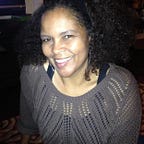Labels
She arrives at school and enters the teacher lounge where testing materials are being given out for practice PSAT’s and SAT’s. She quickly realizes she is not testing students. She thinks it odd, questions the testing supervisor about it, and gets sideways responses that don’t answer any of her questions. A few weeks later, she finds herself left out of the process once again when her site administers the district writing prompt. She gets a knot in the pit of her stomach and her shoulders tingle, and she keeps the promise she made to herself some time ago to not ignore her own sense of a thing. So, again, she questions why she is the only teacher at this small high school who is not given students to test, and she, again, gets answers to questions she didn’t ask. After the third request, she finds out her hunch is correct, and there is in fact a reason she’s been left out. The reason she is given is, at some point, when she worked in the night program last year, maybe the year prior — when she first went back to the classroom — her testing administrator decided she was too slow getting started with testing. She tries to recollect the times she tested, and too many hours and days have passed and she stops the nonsense of trying to recall a mistake she never knew she made. But what does dawn on her is that even in the night program, though less obvious, she was left out of the process after some time. She starts connecting dots about other people’s behavior toward her, other gestures and smirks, and she attributes all of them to the awareness to everyone but her, that she is the slow one, the one incapable of testing and, apparently, incapable of correcting her handicap, hence why she has been taken out of the pool of teachers for testing. She wonders how long she’s been walking around her campus with dignity, her head held high, when in other people’s view she wears the dunce cap with the label in all caps “TOO SLOW.”
She realizes she is an unreliable narrator in this story, because she knows that she can only rely on what she knows from what she’s been told. She cannot read anyone’s mind. She doesn’t know how others really feel about her, she can only guess at their biases, prejudices against her — but old messages return, ones that began years ago when her mother and her father insisted she was clumsy, she didn’t listen, didn’t behave. And then they’d beaten sense into her to cure her inadequacies. She also realizes that feeling othered is a thing that has happened to her so many times in her life she cannot count, and she knows she needs to write out what has happened to rid herself of the self-loathing she’s prone to do since childhood. And at some point in the process of being all in her feelings, she begins to think about her students.
She wonders how many times any of her students have been too quickly labeled as unable to learn before they believed it themselves. How many times were they labeled, whether through direct or indirect comments, about how slow they are. She wonders who was the first teacher to prejudge what they were capable of because of a teacher’s arbitrary (or state-driven) timeline for them to grasp a concept. She wonders about their coping mechanisms. Do they have an outlet? Do they have a way to process, a way out of a tailspin into self-doubt born from the messages they have received about their inadequacies. At a continuation school, where all of the students are the “100% of the 5%” to quote the assistant principal, she knows those negative messages are easily recalled at the slightest perceived negative gesture, comment, rejection, whether real or imagined, that the student faces on any given day. And even if the student is emotionally aware enough to not believe she is stupid, slow, or lazy, it is like the judge in court who says “strike those words from the record,” but the words have already been spoken, been heard and had their influence. She begins to have more empathy for the student who doesn’t speak, who fake sleeps, who needs to go to the restroom at the critical moment of instruction.
What she hopes moving forward in this trauma-informed culture, is that she remembers to cultivate a safe environment in her classroom, one where her treatment of her students honors them as the unique individuals they are, one where she nurtures their strengths, is transparent and patient about their weaknesses, and sees those weaknesses as opportunities for growth, rather than labels that are permanent reflections of their character and their possibilities.
